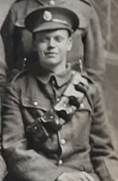
Figure 1. 430186 Driver JAMES JOSEPH FENNEY, R.E.
(Image courtesy of Gabrielle Battrick)
8386
(430186) Driver
JAMES JOSEPH FENNEY
Royal Engineers
By
Lieutenant Colonel Edward De Santis, MSCE, P.E.,
MinstRE
(Marcj 2023)

Figure 1. 430186 Driver JAMES JOSEPH FENNEY, R.E.
(Image
courtesy of Gabrielle Battrick)
1. INTRODUCTION
This work on the life and military service of James Joseph Fenney is based on the author’s acquisition of a postcard containing an image of him during the Great War of 1914-1918 (see Figure 2 below).
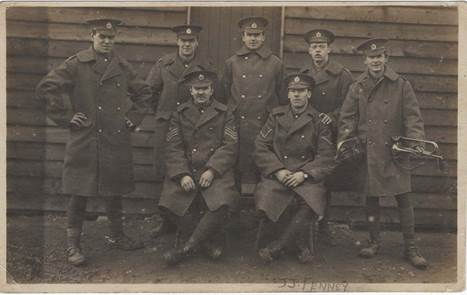
Figure 2. Great War Postcard Photograph of J. J.
Fenney.
(Image from the author’s collection)
NOTE: The postcard photograph above was produced by Fred C. Palmer of Herne Bay, Kent. Herne Bay is a seaside town on the north coast of Kent in southeast England. It is 6 miles north of Canterbury and 4 miles east of Whitstable. The photograph probably was taken in the winter of 1916/1917 before the 421st Field Company embarked for France.
In the border of the photograph beneath the Lance Corporal seated on the right, someone has written in pencil the name JJ Fenney. On the reverse side of the postcard his name is again written in pencil as James Fenney. The image in Figure 1 was taken from a group photograph found on the Fenney family tree produced by Gabrielle Battrick. Here is that group photograph where Fenney is indicated by an X and his name:
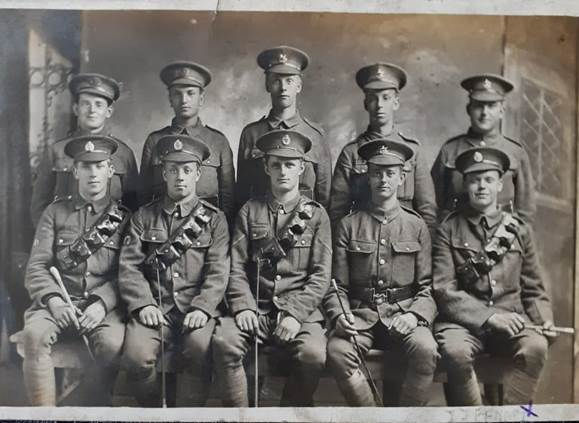
Figure 3. A Group Photograph from Fenny’s
Unit during the War.
(Image courtesy of Gabrielle Battrick)
I have found it difficult to match his image in Figures 2 and 3, however I have assumed that he is in both of the photographs. As he was a Driver, as shown in Figure 3[1] and in his military service papers, then he cannot be the Lance Corporal in Figure 2 under whose image his name is written. He may be the man holding the bugles in Figure 2, but this is not certain. Since the notation regarding him in Figure 3 was presumably made by a family member, I am willing to accept that J.J. Fenney is the man denoted by the X.
Most of the information in the following narrative was derived from Fenny’s service papers. Information from other sources is cited in the Endnotes.
2. FAMILY INFORMATION AND EARLY LIFE
Family Information
James Joseph Fenney was the son of Thomas Fenney (1872-1953) and his wife Mary Jane Fenney, née Moyers (1875-1951). In addition to James, the Fenneys has three other sons: Thomas Leo (1899-1968), John Edmund (1905-1968) and William Francis (1907-1963).[2] Of the four boys only James and Thomas would be old enough to serve in the Great War.
Early Life
James Joseph Fenny was born in St. Helens, Lancashire in 1896. According to the 1911 Census of England and Wales the Fenney family lived at 75 Junction Lane in St. Helens.
1911 Census of England and Wales
Census Place: 75 Junction Lane, Sutton, St. Helens, Lancashire. |
|||||
Name and Surname of each Person |
Relation |
Marital Status |
Age |
Profession or Occupation |
Birthplace |
Thomas Fenney |
Head |
Married |
38 |
General Labourer |
Sutton, |
Mary Jane Fenney |
Wife |
Married |
36 |
|
St. Helens, |
James Joseph Fenney |
Son |
|
15 |
Engine Cleaner, Railways |
St. Helens, |
Thomas Leo Fenney |
Son |
|
11 |
School |
St. Helens, |
John Edmund Fenney |
Son |
|
5 |
School |
St. Helens, |
William Francis Fenney |
Son |
|
4 |
|
St. Helens, |
John Oates |
Lodger |
Single |
40 |
Day Wage Man |
St. Helens, |
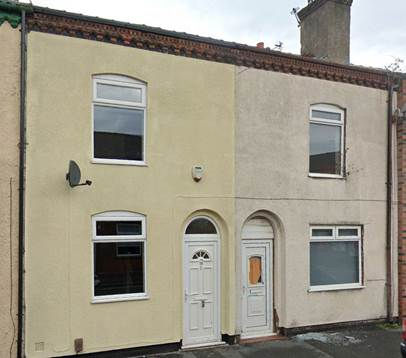
Figure 4. The Fenney Home at 75 Junction Lane, Sutton, St.
Helens, Lancashire.
(Image courtesy of Google Earth)
NOTE: 75 Junction Lane is the tan house on the right with the boarded window in the door.
By 1915 and before he joined the Army, James was living on his own at 133 Robins Lane in Sutton, St. Helens. Unfortunately there are modern residential structures located at this address so no image of his house was available.
2. PHYSICAL DESCRIPTION
The following is a description of James Joseph Fenney based on a medical examination given him when he joined the Army in 1915.
Apparent age: |
19 year and 6 months |
Height: |
5 feet 9¼ inches |
Weight: |
129 pounds |
Chest fully expanded: |
35½ inches |
Range of expansion: |
1½ inches |
Vision: |
Good |
Physical development: |
Good |
NOTE: Based on his apparent age of 19 years and 6 months, it appears that that he may have been born in January of 1896.
3. ENLISTMENT AND TRAINING
Enlistment
Fenney enlisted in the Royal Engineers Territorial Force (T.F.) at St. Helens on 27 July 1915. His enlistment was to be for “war service in the Unite Kingdom or abroad.” His attestation was certified by Major J. Haslam Fox of the West Lancashire Divisional Royal Engineers (W.L.D.R.E.). Fenney’s Certificate of Medical Examination found him to be fit for service in the Territorial Force and his Certificate of Primary Military Examination found him to be fit for service in the W.L.D.R.E. Major Fox approved his enlistment and Fenney was posted to the 1/3rd (West Lancashire) Field Company, Royal Engineers in the 57th (2nd West Lancashire) Division as 8386 Driver James Joseph Fenney, R.E.[3] When mobilized for war service the company would be redesignated as the 421st (West Lancashire) Field Company, R.E. and Fenney’s regimental number would be changed to 430186.
Training
Fenny’s company was not mobilized for war service until October 1915. Between July and October 1915 he underwent recruit training. Just what type of training he received is not known. His trade in civilian life had been working for the railroad cleaning locomotives. How this trade provided him with experience to be a driver of vehicles (wagons) in an engineer field company is not known. Surely he received basic training as a soldier to include wearing of the uniform, customs of the service, care of his equipment, drill, musketry training and some training dealing with the vehicles that he would be driving. Just how and why he was designated as a Driver when he enlisted is a mystery.
In 1914, each infantry division included two field companies. A third was added during January 1915, as more units came up to strength and passed training. The field company was composed of 217 men. The men were organised into two branches, mounted and dismounted. As a Driver, Fenney served in the mounted branch of his company. The field companies relied on horses for transport and had an establishment of 17 riding horses for the officers and NCOs of the Mounted Branch, plus 50 draught heavy horses, and 4 pack horses. There were also 5 spare draught horses as replacements.[4] Fenny could have served as a Driver in the type of wagon shown in Figure 5 below.
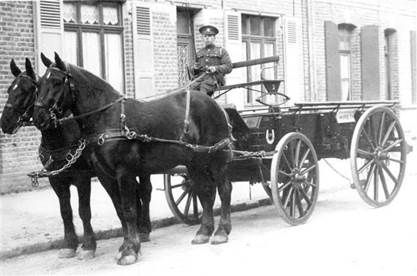
Figure 5. The General Service Wagon of the Type that
Fenney may have Driven.
(Image courtesy of Wikipedia)
The duties of a driver in a field company involved transporting the equipment and supplies of the company while moving by road from place to place using wagons similar to the one above. Men of the company might also be moved in these wagons if required. At the front the drivers performed similar duties transporting tools, lumber, sandbags, barbed wire, ammunition, and other materials needed by the company and by other units in the trenches. The drivers normally did not stay up front with the men working in the trenches. Unless they were transporting tools and equipment to the front line they remained in the company rear area. Although this was a much safer area than the trenches, the drivers presented themselves as prime targets for enemy artillery when they were on roads, especially when they were in slow moving columns.
4. POSTINGS, ASSIGNMENTS AND CAMPAIGN SERVICE
Home Service (1915-1917)
Following his training Driver Fenney joined his company at or near Canterbury, Kent, where the company was engaged in unit training. On 9 Oct 1915 he was charged with not complying with an order by Lance Corporal H. Hall and was sentenced to three days confinement to camp. There are Lance Corporal in both Figures 2 and 3. Perhaps one of these men is Hall. Fenney’s transgression may not have been indicative of a poor soldier’s attitude towards authority. It probably was simply an omission on his part caused by his rapid change from civilian to military life. On 9 November 1915 he was again brought up on charges by a Lance Corporal named Gerrard (who also may be one of the Lance Corporals in the photographs) for being late for parade by three minutes. This almost seems like an action on the part of a junior NCO out of vindictiveness or by a man who wanted to show off the authority of his one stripe. In any case the charge was upheld by the company commander and Fenney was confined to barracks for three days for this offense. For the rest of his time in the company he was not charged with any disciplinary action.
In June of 1916 Fenny and his company were still at Canterbury and in the following month the 57th Division and its subordinate units were transferred to the Emergency Reserves in the Aldershot area where it continued its training. The company moved to Surrey in October 1916. On 2 February 1917 the 421st (West Lancashire) Field Company became part of the British Expeditionary Force (B.E.F.) bound for France.
France (1917-1918)
The units of the 57th Division crossed the English Channel between 7 and 22 February 1917 and they concentrated at Merris in northern France about 15 kilometers west-northwest of Armentières and about 20 kilometers north of Béthune. On 25 February 1917 the 421st Field Company was in the front line north of Tilleloy [Tilloloy] near the Somme.
Driver Fenney was admitted to hospital on 23 June 1917 with an undisclosed ailment. He rejoined his unit on 29 June. From 26 October to 10 November 1917 Fenny’s company took part in the Second Battle of Passchendaele. In the low ground west of the Passchendaele Ridge, three months of constant shelling had blocked the watercourses that normally provided drainage in the area. When rain began falling on the night of 4 October—which continued intermittently for the next three days—the battlefield became a quagmire, making movement extremely difficult. To improve the transport of artillery and supplies, an extensive program of road building was started.
|
Ten field companies, seven Royal Engineers tunnelling companies, four army troop companies and nine infantry battalions were put to work repairing or extending plank roads. The 421st Field Company became heavily engaged in this work. Figure 6. Battlefield Conditions at Passchendaele in October 1917.(Image courtesy of Wikipedia) |
The conditions depicted in the image above were not uncommon on the battlefields of the Great War and these conditions presented many challenges to units of the Royal Engineers. Drainage became a nightmare. How to dispose of the water in the craters created by shellfire and where to direct the water presented many challenges for the officers and non-commissioned officers of the companies. Making areas passable for men on foot was the primary objective along with keeping trenches dry (or relatively so) and preventing trench walls from collapsing.
On 19 January 1918, James’s brother Thomas enlisted as a Private in the 2/1st Lancashire Hussars Yeomanry, regimental number 76576.[5] This regiment had been converted to a cyclist battalion in July 1916. Thomas was located with his unit at Skegness in Lincolnshire.
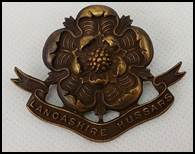
Figure 7. Cap Badge of the Lancashire Hussars
Yeomanry.
(Image courtesy of Wikipedia)
James Fenney was admitted to hospital on 20 January 1918, again for an undisclosed ailment. He rejoined his company on 9 February 1918. The 421st Field Company experienced a rather quiet period into the early summer of 1918. James was granted 14 days leave in the U.K. beginning on 6 June 1918. He returned to France and to his unit on 20 June.
The 57th Division was involved in the Battle of the Scarpe from 26 to 30 August 1918. Heavy rains during the first night resulted in slippery ground, difficulties in assembling troops and late starts for the assaults. Stiff resistance from the Germans and their heavily defended positions limited gains to around 3 kilometres. Again the company was involved in improving ground conditions and probably supplied men to go along on raiding parties and attacks on the German trenches during the battle.
From 2 to 3 September 1918 the 421st Field Company took part in the Battle of the Drocourt-Queant Line. The Drocourt–Quéant Line ran between the French cities of Drocourt and Quéant and was part of a defensive system that ran from a point within the Hindenburg Line, eleven miles west of Cambrai, northward to within seven miles west of Douai and terminated along the front east of Armentières. The Drocourt–Quéant Line was a system in depth and incorporated a number of mutually supporting lines of defence. The defensive lines consisted of a front line trench system and a support line trench system, each consisting of two lines of trenches. The defenses incorporated numerous fortifications including concrete bunkers, machine gun posts and heavy belts of barbed wire. Combat engineers would be required to support the infantry by demolishing these defensive positions and by supporting successful infantry advances against enemy trenches to prepare for counter attacks.
On 28 September 1918 Fenny’s company and the entire 57th Division began the pursuit of the German forces to the Mons. At the Canal Du Nord they met heavy resistance. The Canal du Nord defensive system was the Germans' last major prepared defensive position opposite the British First Army. It was a significant obstacle as the Germans had taken measures to incorporate the unfinished canal into their defensive system. The action at the Canal Du Nord lasted through 1 October. Following the battle the 421st Field Company began preparation for the advance on Cambrai. Fenney would not see that battle. He was killed in action on 4 October 1918 near Anneux, a village in the Department of the Nord, France, a short distance to the south of the main road from Cambrai to Bapaume. Driver Fenney was buried at Anneux British Cemetery, Section II, Row C, Grave 1. At the time of is death he had served one year and 235 days in France and Flanders. His total service in the Army was three years and 70 days.
Fenney was one of 16 fatalities suffered by the 421st Field Company during the war. Due to its late deployment to France, the company did not take part in many of the more costly battles of the war. The 421st Field Company’s casualties were very light in comparison with those of other companies that had been there since the beginning of the war. The full list of the company’s casualties can be found in Annex A at the end of this narrative.
Private Thomas Leo Fenney was discharged from the 2/1st Lancashire Hussars Yeomanry on 13 January 1919 while the regiment (actually a battalion) was at Bandon and Buttevant in County Cork, Ireland. Unlike his brother James, Thomas did not see active service during the war.
On 7 February 1919 James’s mother received his personal effects. These consisted of:
· A string of rosary beads
· His wallet with photographs
· His razor and razor case
· Two notebooks
· A religious medallion in a case
· Two religious books
· A mirror
· His watch with a lanyard attached
· His cigarette case
· A match box cover
Apparently young James was a religious man, although his service papers do not indicate what his religion was. On 19 January 1922 Mrs. Fenney also received her son’s British War Medal and Victory Medal.
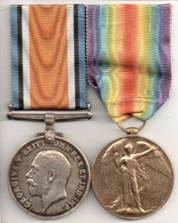
Figure 8. The British War Medal and
Victory Medal.
(Image from the author’s collection)
5. MEDALS, AWARDS AND DECORATIONS
James Fenney’s service papers and his Medal Index Card indicate that he was awarded the British War Medal and Victory Medal. Images of these medals are shown in Figure 8 above. The medals shown are not those of Driver Fenney. The whereabouts of his medals are not known. Figure 8 is presented only to illustrate what the medals look like.
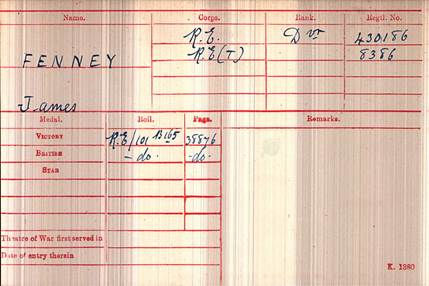
Figure 9. The Medal Index Card of Driver Fenney.
(Image
courtesy of Ancestry.com)
NOTE: Medal Index Cards normally show the Theatre of War that the man first served in and the date of his entry therein. As can be seen in Figure 9, this data has not been entered. Also, if a soldier is killed in action, “KIA” is normally entered in the Remarks section. This also was not done in Fenney’s case.
Parents
Thomas Fenney (1872-1953)
Although the 1911 Census of England and Wales shows Thomas Fenney as a General Labourer, it appears from the photograph below that he might have become an inn keeper. In the Fenney family tree where this photograph was found, the child is identified as James Joseph Fenney, although the child appears to be a girl. The structure appears to be the rear of a railway roundhouse, which had been converted into an inn. If the youngster in the photograph is James Joseph Fenney he appears to be about four years old, so the image must date back to about 1900. The man in the photograph is not identified. If he was Thomas Fenney, then he would have been 28 years old when the photograph was taken. Unfortunately, the 1901 Census of England is not posted on any of the Fenney family trees, therefore it is not possible to verify that Thomas Fenney was the owner of an inn in 1901. If he was the owner then he either sold it or lost it as a result of financial difficulties by 1911 when he is shown as a General Labourer on the census for that year.
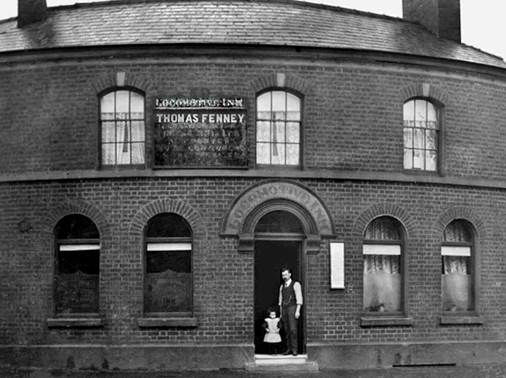
Figure 10. Thomas Fenney’s Locomotive
Inn.
(Image courtesy of Gabrielle Battrick)
As a young man Thomas Fenney lived in St. Helens and married Mary Jane Moyers in Prescot in July 1896 when he was 23 years old. He continued living in St. Helens and in the 1939 Register of England he is shown as a retired Colliery Hewer (a man who cut coal from a seam in a mine). He died in Prescot in October 1953 at the age of 81.
Mary Jane Fenney (1875-1951)
Mary Jane Fenney was the daughter of James Moyer (1844-1899) and Alice Moyer, née Haslam (1845-1914). She was born in St. Helens, Lancashire on 30 January 1875 and lived with her husband Thomas until her death at the age of 76 in October 1951.
Siblings
Thomas Leo Fenney was born in St. Helens, Lancashire on 19 December 1899. As previously mentioned, Thomas served in the 2/1st Lancashire Hussars Yeomanry during the end of the Great War, but he did not see any service in the war. He married Lilian Mary Clifft (1898-1991) in January 1924 in Prescot, Lancashire and appears to have become a Gardener.[6] Thomas and Lilian did not have any children. Thomas died in Fylde, Lancashire on 3 April 1968 at the age of 68.
John Edmund Fenney was born in St. Helens, Lancashire on 28 November 1905. He married Elizabeth D. Atherton (1904-?) in Prescot, Lancashire in April 1935. The 1939 Register of England indicates that he worked as a General Labourer for the London, Midland and Scottish Railway in the wagon repairing department. John and Elizabeth did not have any children. John died in Bolton, Lancashire in October 1968, just six months after his brother Thomas, at the age of 62.
William Francis Fenney was born in Prescot, Lancashire on 16 February 1907. It appears that William remained a bachelor all his life. In 1939 he was living with his parents at 96 Robins Lane[7] in St. Helens, Lancashire and like his brother John was working as a General Labourer for the London, Midland and Scottish Railway.[8] He also had been trained by the railway to become an Air Raid Precautions (A.R.P.) warden as an ambulance driver or crewman. Generally, an A.R.P. Warden's main task was to try and protect people during air raids, when enemy planes dropped bombs, especially on cities. They would hand out gas masks and guide people to shelters. William Fenney had been specifically trained to carry injured people by ambulance to a hospital or shelter. Casualties from bombing were to be taken to first aid posts or hospital by volunteer drivers. There were also stretcher parties that carried the injured to posts. Obviously this had been in preparation for the coming war and the anticipated air raids by the Luftwaffe. William died in St. Helens, Lancashire in January 1963 at the age of 55.
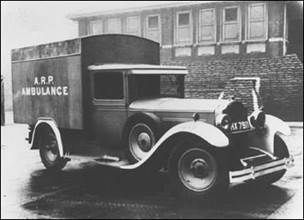
Figure 11. An A.R.P. Ambulance, circa World War
2.
(Image courtesy of the British Ambulance Preservation
Society)
421st Field Company, Royal Engineers
Casualties During the Great War (from 1915 to 1919)
(in alphabetical order by date of death)
|
Regimental Number |
Rank |
|
Date of Death |
RIDYARD, James |
430072 |
Sapper |
KIA |
10 Apr 1917 |
HARRIS, Herbert |
426810 |
Sapper |
DOW |
7 May 1917 |
MATHER, Stanley |
426798 |
Sapper |
KIA |
7 May 1917 |
MARSHALL, George Arnold Percy |
488595 |
Sapper |
Died |
27 May 1917 |
FRODSHAM, William |
430218 |
Sapper |
DOW |
16 Jun 1917 |
BURGESS. John |
471686 |
Sapper |
KIA |
23 Jan 1918 |
WEBB, George Goodall |
430260 |
A/L/Corpl. |
KIA |
23 Jan 1918 |
WHITTINGHAM, Joseph |
430147 |
A/Corporal |
KIA |
23 Jan 1918 |
GALLYER, Stephen |
430312 |
A/2nd /Corpl. |
DOW |
13 Feb 1918 |
RICHARDS, Thomas Alfred |
231845 |
Sapper |
KIA |
8 May 1918 |
HUNT, William |
430372 |
Corporal |
DOW |
10 May 1918 |
NEGUS, Stephen Alfred |
159839 |
Sapper |
KIA |
15 Sep 1918 |
JONES, William |
459910 |
Sapper |
KIA |
29 Sep 1918 |
STUART, Albert |
550071 |
Driver |
DOW |
3 Oct 1918 |
FENNEY, James Joseph |
430186 |
Driver |
KIA |
4 Oct 1918 |
McCOY, John Joseph |
430182 |
Driver |
KIA |
4 Oct 1918 |
Legend: KIA – Killed in Action; DOW – Died of Wounds; Died – of disease or accidentally killed.
The following is a statistical analysis of these deaths by various categories:
1. Total Company Casualties from all Causes: 16
2. Deaths by Rank
Corporals: 2 (includes 1 Acting Corporal) 12.5%
2nd Corporals: 1 (Acting 2nd Corporal) 6.3%
Lance Corporals: 1 (Acting Lance Corporal) 6.3%
Sappers: 9 56.3%
Drivers: 3 18.3%
3. Deaths by Year
1917: 5 (31.3%)
1918: 11 (68.7%)
NOTES:
Regimental Numbers in the series 430XXX appear to be the original numbers assigned to the men when the 421st Field Company was formed. Eight of the 16 casualties (50%) have numbers in this series.
Casualties among junior non-commissioned officers were particularly high in January and February 1918.
On 3 and 4 October 1918 the company lost three Drivers, including Fenney. These men probably were wounded or killed by artillery fire following the Battle of Canal Du Nord and in preparation for the Battle of Cambrai during the Pursuit to Mons phase of the British 100-day offensive.
REFERENCES:
Census
1911 Census of England.
1939 Register of England.
Family Trees
James Joseph Fenney (by Gabrielle Battrick).
Thomas Fenney (Father) (by Gabrielle Battrick).
Mary Jane Moyers (Mother) (by Gabrielle Battrick).
Internet Web Sites
Commonwealth War Graves Commission.
https://www.cwgc.org/find-records/find-war-dead/casualty-details/187879/james-joseph-fenney/
2/1st Lancashire Hussars Yeomanry.
57th (2nd West Lancashire) Division.
https://www.longlongtrail.co.uk/army/order-of-battle-of-divisions/57th-2nd-west-lancashire-division/
57th (2nd West Lancashire) Division.
https://en.wikipedia.org/wiki/57th_(2nd_West_Lancashire)_Division
Field Companies of the Royal Engineers.
British Ambulance Preservation Society.
https://www.facebook.com/media/set/?set=a.1009373565884440.1073741837.999702060184924&type=3
Military Documents
Medal Index Card (J.J. Fenney)
Medal Index Card (T.L. Fenney)
Service Papers (J.J. Fenney)
a. Territorial Force Attestation (Army Form E 501).
b. Medical Inspection Report.
c. Medical History (Army Form B 178).
d. Statement of Services (Army Form B 200).
e. Military History Sheet.
f. Casualty Form – Active Service.
g. Disciplinary Actions Form (Army Form B 122).
h. Imperial and General Service Obligation (Army Form E. 624).
ENDNOTES
[1] Drivers in the Royal Engineers wore bandoliers and carried riding crops like the men seated in the front row of this photograph.
[2] Fenny family tree.
[3] 8386 was his regimental number in the Territorial Force.
[4] The Long, Long Trail.
[5] Medal Index Card.
[6] 1939 Register of England.
[7] A modern residential structure now exists at this address.
[8] 1939 Register of England.